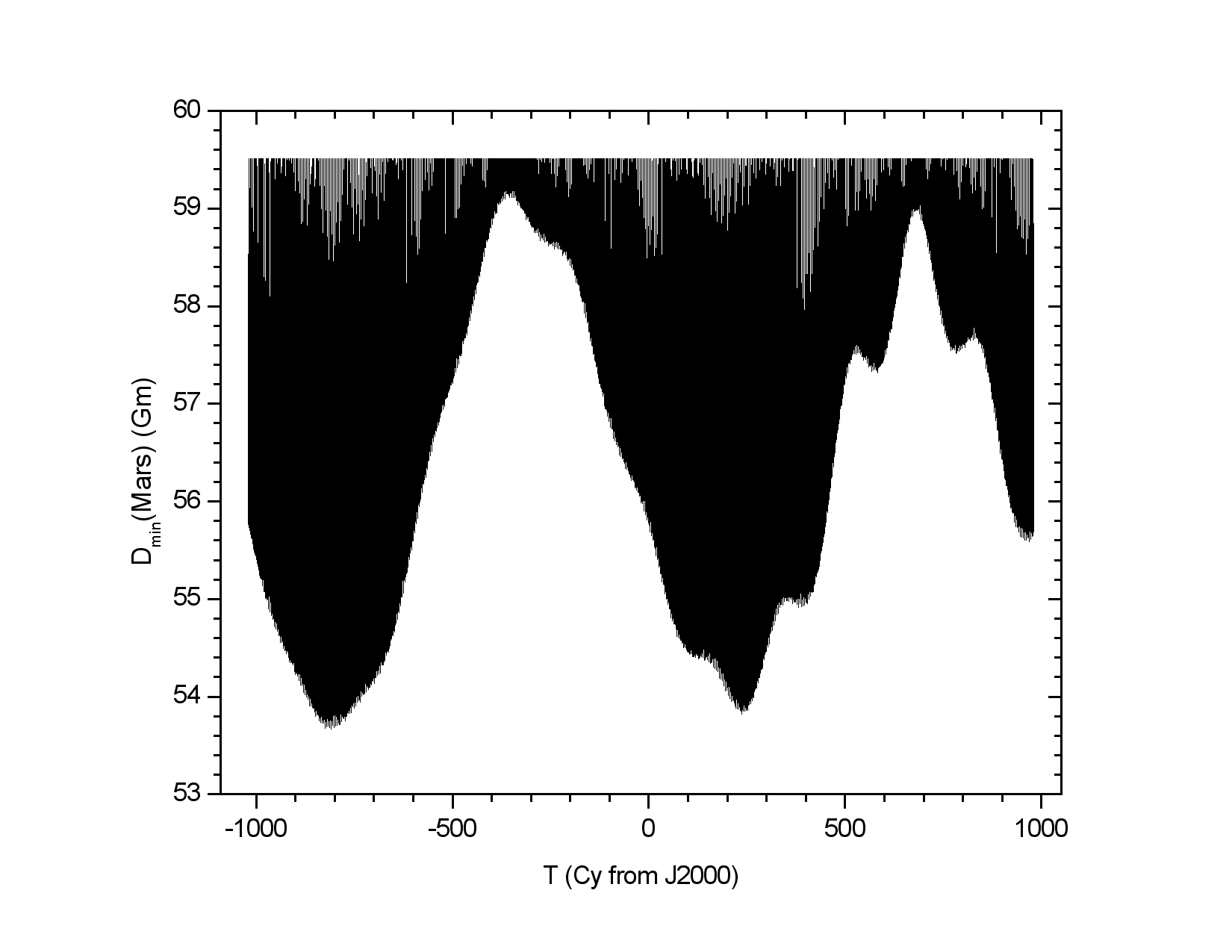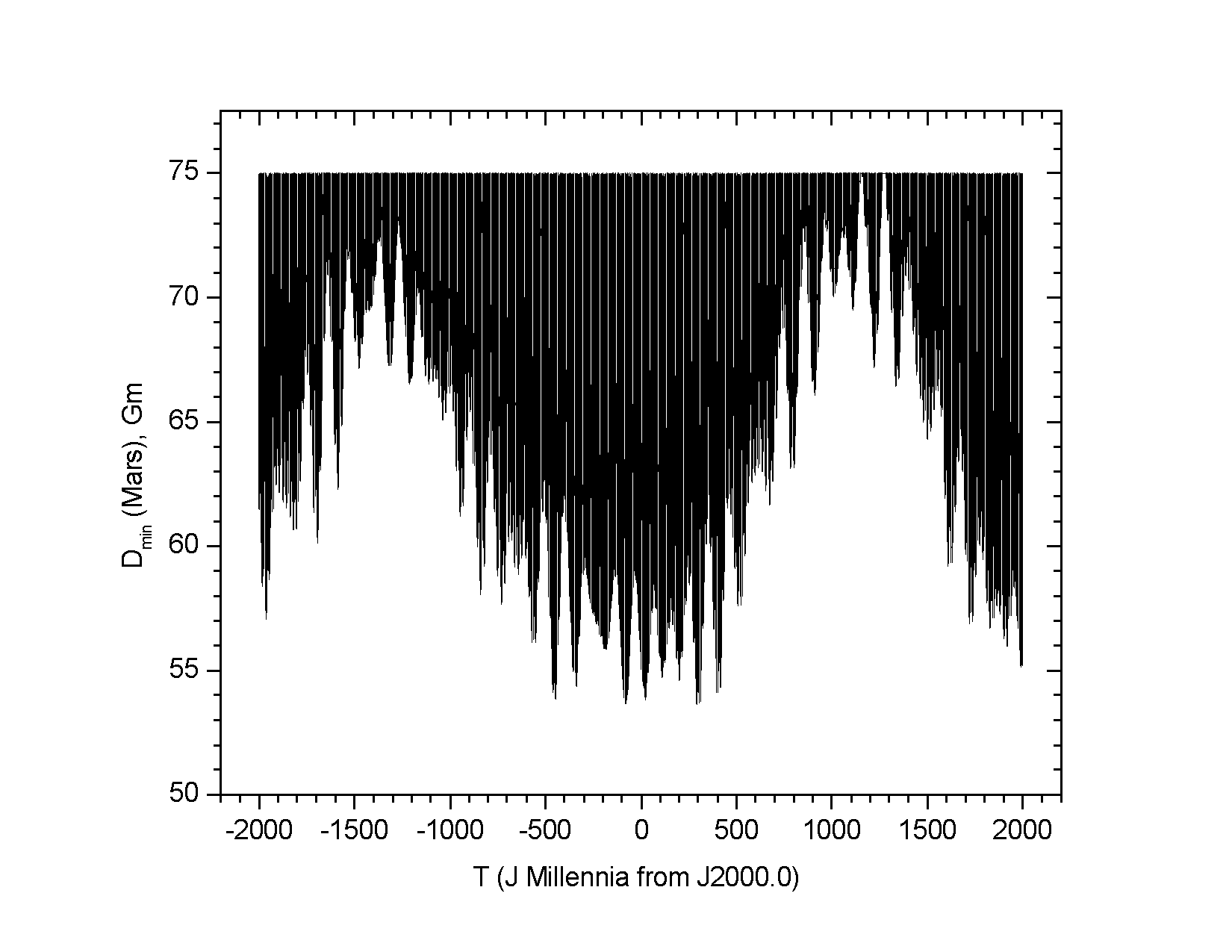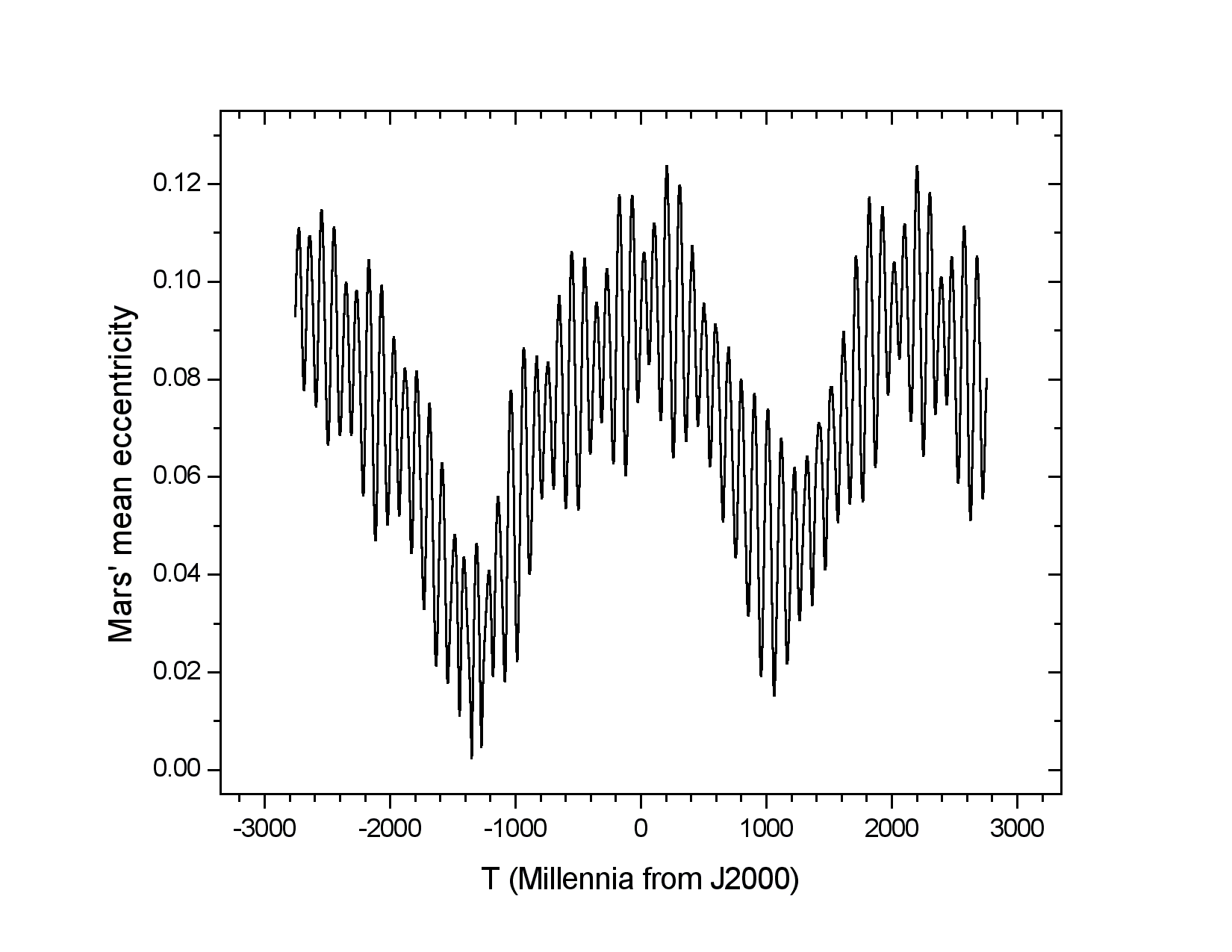MarsDist (original) (raw)
On August 27, 2003, the Mars' "great opposition" took the red planet closer to Earth than it had ever been during the past 60000 years.
Although this event does not have any special significance beyond that of a pure curiosity, nevertheless its detection by Solexnicely shows one of the peculiar program's capabilities.
Solex can perform long-term integrations of the Solar System. On my fastest machine (a 1700 MHz Pentium 4 notebook) the integration of a system including the Moon and the three major asteroids takes about 1 minute/millennium, which means that by running over a week-end, the program can span a time interval as big as 3.5 Myrs.
Along with the integration, the program can optionally perform additional tasks, as writing on disk regularly spaced data in form of positions or classical orbital elements, or detecting and recording the circumstances of closest approach between bodies. That's how Solex could find out (in less than 1 hour computing time) that the latest closer Mars' opposition took place on September 12, -57616 (TDT) of the Julian calendar, (57617 BC or 59615.267 Julian years before J2000.0) at a distance of 55.718 Gm (millions of km), versus the 55.758 Gm of the 2003 opposition.
Is this result reliable ? Surprisingly enough, yes, it is very reliable. For the inner planets the major source of uncertainty in the orbit propagation is incomplete modelling of the perturbations arising from the asteroids. Considering that the mass of the three major asteroids is presumably larger than the collective mass of all the residual ones, if the integration is repeated using a model NOT taking in account the three major asteroids, the discrepancy with the previous result will give a good measure of the uncertainty.
Performing the same calculation without considering Ceres, Pallas and Vesta, the same date of closer approach is found, only displaced by less than one hour, and at the same minimum distance of 55.718 Gm (actually, the discrepancy in distance is only 480 km). The discrepancy is still about 1 hour and 5000 km if the integration is run using starting conditions fitting the (less accurate) JPL DE200 ephemerides instead than the more recent DE406. Since the result is not affected by changes in the model or in the starting conditions which roughly correspond to the maximum possible error, we are given a pretty good confidence in the accuracy of the dating.
The figure below was constructed from the ASCII file of Mars' closest approaches generated by Solex over the time span of 1000 centuries before and after the present epoch. The long-term variation of the nearest closest approaches is given by the lower boundary of the black region of the plot. It reflects a corresponding long-term periodic variation of the eccentricity of Mars, having a period of about 95000 years. As the eccentricity of Mars becomes bigger, its perihelion becomes closer to the Sun, and the minimum distance from Earth becomes smaller.
The second figure was similarly obtained, and is the same of the 1st figure, but over a time span 20 times larger (+- 2 Myrs from J2000). It is to note that over a period of 19000 years, between 1.266 Myrs and 1.285 Myrs in the future, Mars will never come closer than 75 million km. The absolute minimum distances over the whole time span of 4 million years are for the past: 53.66 Gm, 80955.936 Julian years before J2000.0; for the future: 53.641 Gm, 292851.721 Julian years after J2000.0.
The third figure shows the variation of the eccentricity of Mars over the time span of 5.5 million years, centered at the present epoch. The integration took a total of four days on a 1700 Mhz machine. The figure shows that there has been a time, 1.35 millions years ago, when the orbit of Mars was nearly circular (e = 0.002).
Back to Solex page ...

